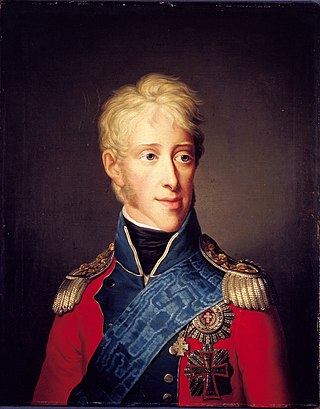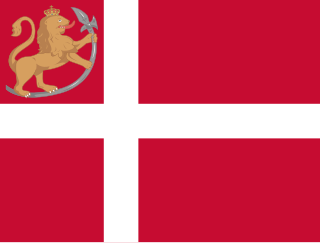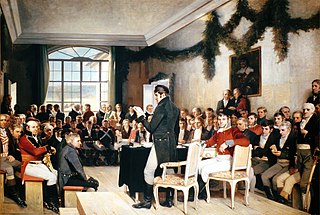Related Research Articles

The Danish West Indies or Danish Virgin Islands or Danish Antilles were a Danish colony in the Caribbean, consisting of the islands of Saint Thomas with 32 square miles (83 km2); Saint John with 19 square miles (49 km2); and Saint Croix with 84 square miles (220 km2). The islands have belonged to the United States as the Virgin Islands since they were purchased in 1917. Water Island was part of the Danish West Indies until 1905, when the Danish state sold it to the East Asiatic Company, a private shipping company.

Denmark and the former real union of Denmark–Norway had a colonial empire from the 17th through the 20th centuries, large portions of which were found in the Americas. Denmark and Norway in one form or another also maintained land claims in Greenland since the 13th century, the former up through the twenty-first century.

Christian IV was King of Denmark and Norway and Duke of Holstein and Schleswig from 1588 until his death in 1648. His reign of 59 years and 330 days is the longest in Scandinavian history.

Frederick III was King of Denmark and Norway from 1648 until his death in 1670. He also governed under the name Frederick II as diocesan administrator of the Prince-Bishopric of Verden, and the Prince-Archbishopric of Bremen (1635–45).

Frederick VI was King of Denmark from 13 March 1808 until his death in 1839 and King of Norway from 13 March 1808 to 7 February 1814. He was the last king of Denmark–Norway. From 1784 until his accession, he served as regent during his father's mental illness and was referred to as the "Crown Prince Regent". For his motto he chose God and the just cause and since the time of his reign, succeeding Danish monarchs have also chosen mottos in the Danish language rather than the formerly customary Latin.

Frederick V was King of Denmark and Norway and Duke of Schleswig-Holstein from 6 August 1746 until his death in 1766. A member of the House of Oldenburg, he was the son of Christian VI of Denmark and Sophie Magdalene of Brandenburg-Kulmbach.

Sweden and Norway or Sweden–Norway, officially the United Kingdoms of Sweden and Norway, and known as the United Kingdoms, was a personal union of the separate kingdoms of Sweden and Norway under a common monarch and common foreign policy that lasted from 1814 until its peaceful dissolution in 1905.

The Treaty of Kiel or Peace of Kiel was concluded between the United Kingdom of Great Britain and Ireland and the Kingdom of Sweden on one side and the Kingdoms of Denmark and Norway on the other side on 14 January 1814 in Kiel. It ended the hostilities between the parties in the ongoing Napoleonic Wars, where the United Kingdom and Sweden were part of the anti-French camp while Denmark–Norway was allied to France.
The Convention of Moss (Mossekonvensjonen) was a ceasefire agreement signed on 14 August 1814 between the King of Sweden and the Norwegian government. It followed the Swedish-Norwegian War due to Norway's claim to sovereignty. It also became the de facto peace agreement and formed the basis for the personal union between Sweden and Norway that was established when the Norwegian Stortinget (Parliament) elected Charles XIII of Sweden as king of Norway on 4 November 1814. The Union lasted until Norway declared its dissolution in 1905.

In 1814, the Kingdom of Norway made a brief and ultimately unsuccessful attempt to regain its independence. While Norway had always legally been a separate kingdom, since the 16th century it had shared a monarch with Denmark; Norway was a subordinate partner in the combined state, whose government was based in Copenhagen. Due to its alliance with France during the Napoleonic Wars, Denmark was forced to sign the Treaty of Kiel in January 1814 ceding Norway to Sweden.

The Swedish–Norwegian War, also known as the Campaign against Norway, War with Sweden 1814, or the Norwegian War of Independence, was a war fought between Sweden and Norway in the summer of 1814. According to the Treaty of Kiel, Norway would enter a union with Sweden under Charles XIII of Sweden. The war resulted in Norway being forced into the United Kingdoms of Sweden and Norway, but with its own constitution and parliament. The war marked the last time Sweden participated in an armed conflict with another nation, and its conclusion signalled the beginning of the country's long period of military neutrality.

The United States Virgin Islands, often abbreviated USVI, are a group of islands and cays located in the Lesser Antilles of the Eastern Caribbean, consisting of three main islands and fifty smaller islets and cays. Like many of their Caribbean neighbors, the history of the islands is characterized by native Amerindian settlement, European colonization, and the Atlantic slave trade.

Danish India was the name given to the colonies of Denmark in the Indian subcontinent, forming part of the Danish overseas colonies. Denmark–Norway held colonial possessions in India for more than 200 years, including the town of Tharangambadi in present-day Tamil Nadu state, Serampore in present-day West Bengal, and the Nicobar Islands, currently part of India's union territory of the Andaman and Nicobar Islands. The Danish and Norwegian presence in India was of little significance to the major European powers as they presented neither a military nor a mercantile threat. Dano-Norwegian ventures in India, as elsewhere, were typically undercapitalized and never able to dominate or monopolize trade routes in the same way that British, French, and Portuguese ventures could.

Denmark–Russia relations are the relations between the countries of Denmark and Russia. The Kings of Denmark and the Russian Tsars interacted from the 15th century onwards – subsequently Denmark's control of access to and from the Baltic Sea had considerable significance for the trade and naval flexibility of the Russian Empire, while rivalries between Denmark and Sweden on the one hand and between Sweden and Russia on the other led to alliances and military support. Denmark and the USSR established diplomatic relations on 18 June 1924.

The Danish state bankruptcy of 1813 was a domestic economic crisis that began in January 1813 and had consequential effects until 1818. As Denmark-Norway struggled with the financial burden that the Napoleonic Wars had on the economy, the devaluation of the currency had negative effects on merchants, citizens and businesses alike.

British–Danish relations are foreign relations between the United Kingdom and Denmark. The United Kingdom has an embassy in Copenhagen and Denmark has an embassy in London. Both countries are full members of Council of Europe and NATO.

Denmark–Norway was a 16th-to-19th-century multi-national and multi-lingual real union consisting of the Kingdom of Denmark, the Kingdom of Norway, the Duchy of Schleswig, and the Duchy of Holstein. The state also claimed sovereignty over three historical peoples: Frisians, Gutes and Wends. Denmark–Norway had several colonies, namely the Danish Gold Coast, the Nicobar Islands, Serampore, Tharangambadi, and the Danish West Indies. The union was also known as the Dano-Norwegian Realm, Twin Realms (Tvillingerigerne) or the Oldenburg Monarchy (Oldenburg-monarkiet).

The English Wars were a series of conflicts pitting the United Kingdom and Sweden against Denmark-Norway as part of the Napoleonic Wars. It is named after England, the common name in Scandinavia for the United Kingdom, which declared war on Denmark-Norway due to disagreements over the neutrality of Danish trade and to prevent the Danish fleet falling into the hands of the First French Empire. It began with the Battle of Copenhagen (1801) and its latter stage from 1807 onwards was followed by the Gunboat War, the Dano-Swedish War of 1808–09 and the Swedish invasion of Holstein in 1814.
Treaty of Copenhagen may refer to:

Denmark–Switzerland relations refers to the current and historical relations between Denmark and Switzerland. Denmark has an embassy in Bern. Switzerland has an embassy in Copenhagen, but only offers consular services from the Nordic Regional Consular Centre in Stockholm. Diplomatic relations between Denmark and Switzerland were established in 1945.
References
- ↑ "Treaty between Great Britain [sic] and Denmark." Extracted and translated from the Latin in Hertslet, Lewis. British Foreign Office. A Complete Collection of the Treaties and Conventions at Present Subsisting Between Great Britain & Foreign Powers: So Far as They Relate to Commerce and Navigation; to the Repression and Abolition of the Slave Trade; and to the Privileges and Interests of the Subjects of the High Contracting Parties. The Whole in English, and the Modern Treaties, and Most Important Documents, Also in the Foreign Languages in which They Were Signed. T. Egerton, 1820.
- ↑ Dookhan, Isaac. A History of the Virgin Islands of the United States . Canoe Press, 1974. ISBN 9768125055.